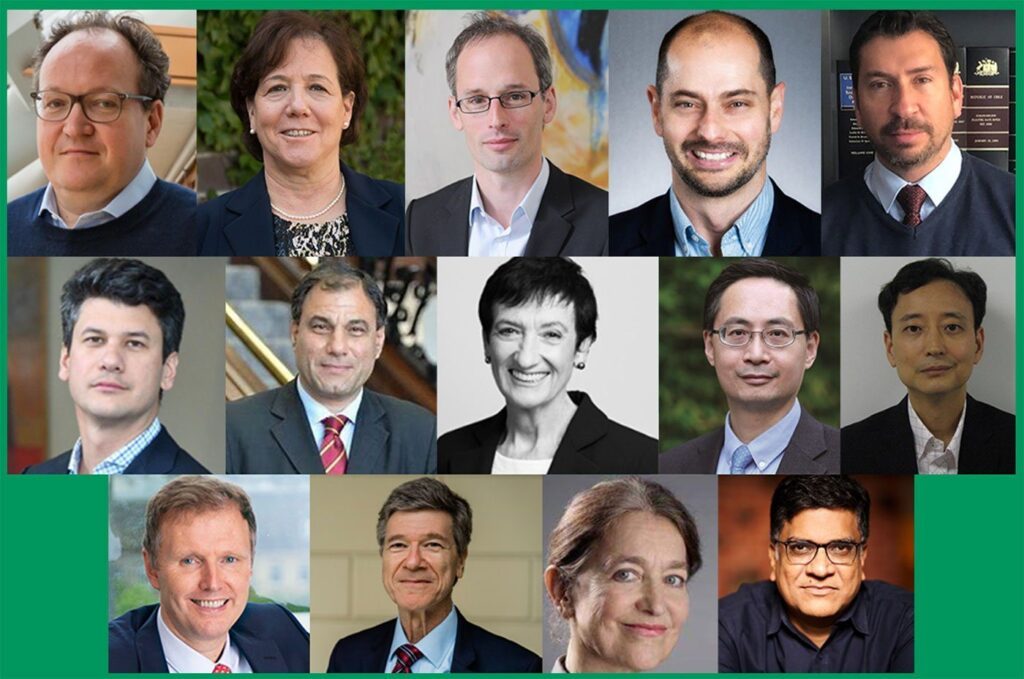Several speakers from government, policy, development banks, corporates and the investor community, who gathered at the BNP Paribas Sustainable Future Forum (SFF) with programming following the sun from Asia Pacific to Europe, Middle East and Africa and ending in the Americas, shared their insights on what to expect at the 2021 United Nations Climate Change Conference (COP26).

During COP26 happening in Glasgow, 31 October-12 November 2021, the banking world will be closely watching new developments offering further visibility, momentum and incentives for the sector so it can pursue its crucial work in enabling positive change.
COP26 is a fantastic awareness-building event, and we have very high expectations.
Stephen Bird, CEO of abrdn
More visibility on disclosure requirements
Further clarification on taxonomy and disclosure requirements will be welcome by most green finance players at COP26.
European taxonomy has a great advantage and true interest as you have everybody saying the same thing, sharing the same language.
Ambroise Fayolle, Vice-President of the European Investment Bank
“We’ve implemented new changes and regulations for the finance industry in China to help meet the Net Zero objective. The country has a green financial system which started 4-5 years ago which includes taxonomy, disclosure requirements, products and incentives – all of which are being refined to be more consistent with carbon neutrality,” Dr Ma Jun, Chairman of the China Green Finance Committee told delegates at SFF. He added: “The PBOC revised its green bond taxonomy earlier this year, removing coal fire power generation from that framework. Green bonds and projects will go through similar revisions.”
Japan also wants to improve the quantity and quality of disclosures. “Exhibiting market functions, authentication framework, and the development of information platforms must be considered,” Hideki Ito, Vice Commissioner for Policymaking, Financial Services Agency, said. “Each country needs to consider its own standards and methods. We want to establish a framework to objectively verify the eligibility of green bonds, through the formulation of threshold standards, based on the practices of institutional investors.”
We’ve implemented new changes and regulations for the finance industry in China to help meet the Net Zero objective.
Dr. Ma Jun, Chairman of the China Green Finance Committee
Clear definitions can greatly help the process, the European Union (EU) believes. “European taxonomy has a great advantage and true interest as you have everybody saying the same thing, sharing the same language. For investors, this is essential so that when they invest in green projects, they can do it with confidence,” remarked Ambroise Fayolle, Vice-President of the European Investment Bank (EIB).
“There is a difference between carbon avoidance and investing in the transition to a clean economy,” cautioned Stephen Bird, CEO of abrdn. “COP26 is a fantastic awareness-building event, and we have very high expectations. We hope that all the countries commit to COP26, that the nationally-derived contributions are upped and the policy actions that follow it are supported by sufficient regulation to hold the world to account.”
We have been able to bring together 590 investors managing US$47 trillion in assets who are calling for the governments at the COP26 to undertake five priority actions to move climate investment.
Mindy Lubber, CEO & President of Ceres
More investments in renewables and innovation
Mindy Lubber, CEO & President of Ceres, expects huge changes to happen at the US Congress that will allows US President Joe Biden to tell negotiators at COP26 that his country is ready to put money on the table. “We have been able to bring together 590 investors managing US$47 trillion in assets who are calling for the governments at the COP26 to undertake five priority actions to move climate investment. The voices are loud: strengthen the national commitments from each country. The US is ready to do that – not just long-term goals, by 2050, but also short-term goals, so by 2035, you will not see a passenger vehicle coming off the assembly line that is a combustion engine vehicle.”
Jennifer Westacott, CEO, Business Council of Australia, said that the country is seeing a movement of capital markets pushing investments in low emissions technologies. “We’ve also seen the ESG market driving businesses to commit harder and further with their emissions reductions,” she added. Australia plans for a mass expansion of renewables, and investments into new technologies like green steel and hydrogen, amid the need for the country to diversify its industries and seize new export opportunities.
In India, climate change is now at the heart of policy agenda and the country is driving the International Solar Alliance (ISA), Dr Niranjan Rajadhyaksha, Research Director and Senior Fellow, IDFC Institute, stressed. “India is aiming to build its renewable energy capacity from 100 GW today to 450 GW by 2030.”
For the UK, meanwhile, COP26 will be a great opportunity to showcase the country’s leadership in wind power and clean energy. “The innovation, the technology keeps improving, the cost benefits will be off the scale. That means investing in it and constantly have targets,” commented Lord Karan Bilimoria, Confederation of British Industry. “One third of gas emissions come from heat, half of that comes from buildings. Of the 29 million houses and homes in [the UK], only 1 million are up to the standard if we are to achieve Net Zero by 2050. It’s a big challenge and this is where green finance comes into play: you need the money to be able to do this and you have to mobilise the private sector.”
Updates on Article 6 and carbon pricing
Professor Karsten Neuhofffrom theClimate Policy Department at the German Institute for Economic Research (DIW Berlin) said he expects more alignment of the policy measures with the climate targets after Germany committed to be carbon neutral by 2045. More clarity on carbon neutral products would be good, he added. “Each sector requires different forms of action. The industry sector, for instance, responds well to price signals.”
Canada, which aims for a carbon tax price of $170 per tonne by 2030, the most aggressive pricing in the world, is currently leading the way. “Currently the carbon tax rise is not applying to major polluters, so we need to apply the plans and close the loopholes,” Toby Heaps, CEO Corporate Knights, commented. “At COP26, I would love to see something really activating our financial sector, adjusting the risk weights for banks, and for our pension funds, who are already playing a big role in financing green infrastructure, play an even bigger role broadly.”
For Claire Tutenuit, Managing Director of France’s Entreprises pour l’Environnement (EpE), the expectations are three-fold. “First, raise the ambitions of the NDCs [Nationally Determined Contributions]. Second, we would appreciate to see the Article 6 issue resolved as this would allow offsets and the transfer of carbon credits and deployment of policies and innovations in various countries. We also need the agreement on funding, US$100 billion public and private money. This needs to be solved to pave the way for the new rounds of innovations. We cannot wait to resolve the climate change issue, but also biodiversity.”
Net Zero = Nature Positive
Ambroise Fayolle of the EIB, the “climate bank” of the European Union, said the Bank will announce two new measures in Glasgow: First, the Paris alignment for counterparts, as the EIB will not finance projects not consistent with achieving the climate targets. The second measure is so-called “adaptation”: understanding the consequences of climate change. “Floods that you’d have once in a century and you now see once a decade, fires you’d have every 10 years and happening every year. This has implications for the infrastructure you build, and that’s called adaptation.”
We cannot wait to resolve the climate change issue, but also biodiversity.
Claire Tutenuit, Managing Director of France’s Entreprises pour l’Environnement
Climate Change and Social & Economic Sustainability are interlinked
Patricio Sepulveda, Head of Public Debt Office at Chile’s Department of Finance explained that the country, which has a very successful history of poverty reduction, has different policies that aim to directly transfer economic growth to the people most vulnerable. “The framework includes sustainability measures, so it includes the climate change dimension but also the social aspect.”
In Brazil, protecting the Amazon Forest and creating a low carbon economy is an overlapping agenda, said Gustavo Montezano, President of the Brazilian Development Bank (BNDES). “In order to make nature sustainable, we need to make society and the economy sustainable too. The main challenge we have today in the region is not capital mobilisation but deployment. […] Deploying capital to the last mile of the Amazon, innovation and technology will support us in this challenge, the most efficient way to search the last mile with proper returns is blending capital, grants, philanthropy government money.”
The time is now
“We are basically close to disaster,” said Professor Jeffrey Sachs, Economist at Columbia University and President of the US Sustainable Solution Network. “We need zero carbon power, some carbon storage, electrification of everything including vehicles, and green energy – zero carbon powered hydrogen and other field maybe ammonia and methane. We need to be smart and efficient about it, use digital technologies like smart grids, 5G, 6G etc.”
Check out the main replays from SFF below
